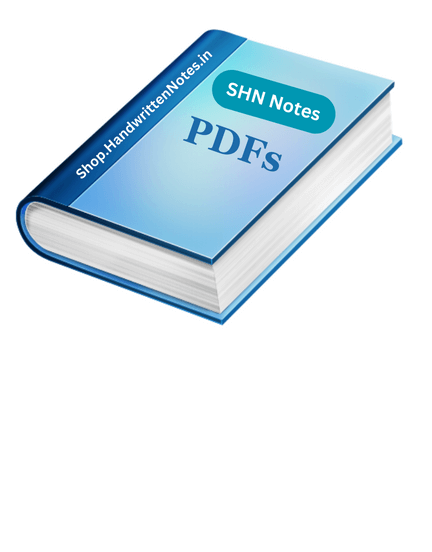
Electronic spectroscopy Notes for Class 12th, BSc & MSc
Original price was: ₹60.00.₹47.00Current price is: ₹47.00.
Language: English
Subject: Chemistry
Pages:39
Size:11.57MB
Description
UNIT-I: ELECTRONIC SPECTROSCOPY
Introduction: Nature and interaction of electromagnetic radiation with matter, types of molecular spectra, selection rules, characteristic features for absorption or emission of electromagnetic radiation, band width, factors contributing to the band width, Doppler broadening, intensity of spectral lines and transition probability, factors influencing positions and intensity of spectral lines, energy dissipation from excited states. Electronic Spectroscopy:
Energy levels, molecular orbitals, theory of electronic spectroscopy, Frank-Condon principle, transition probability, types of transitions, types of absorption bands, solvent effect on electronic transitions, electronic spectra of polyatomic molecules, chromophore and auxochrome, Woodward-Fischer rules for calculating absorption maximum, calculation of absorption maximum in conjugated dienes, trienes, polyenes, poly-ynes, eneynes, alpha, beta- unsaturated carbonyl compounds, benzene and substituted benzenes, other aromatic hydrocarbons, heterocyclic systems. Stereochemical factors in electronic spectroscopy – biphenyls and binaphthyls, cis- and trans-isomers. Angular distortion and cross-conjugation, steric inhibition of resonance. Instrumentation for electronic spectroscopy. Electronic spectroscopy Notes for Class 12th, BSc & MSc
Vendor Information
- Store Name: DMP
- Vendor: DMP
- No ratings found yet!
-
Sale!

Quantum Mechanics-III for M.Sc / B.Sc Handwritten Notes PDF
Original price was: ₹40.00.₹30.00Current price is: ₹30.00. Add to cart -
Sale!

Statistical Thermodymics Notes for M.Sc and B.Sc
Original price was: ₹50.00.₹29.00Current price is: ₹29.00. Add to cart -
Sale!

Molecular spectroscopy notes for BSc & MSc
Original price was: ₹50.00.₹37.00Current price is: ₹37.00. Add to cart -
Sale!

Structure of Solids for B.Sc and M.Sc Handwritten notes
Original price was: ₹108.00.₹100.00Current price is: ₹100.00. Add to cart -
Sale!

Quantum Mechanics-I for M.Sc/B.Sc Handwritten Notes PDF
Original price was: ₹120.00.₹69.00Current price is: ₹69.00. Add to cart -
Sale!

X-ray Spectroscopy Notes PDF for B.Sc/M.Sc
Original price was: ₹40.00.₹30.00Current price is: ₹30.00. Add to cart


Reviews
There are no reviews yet.